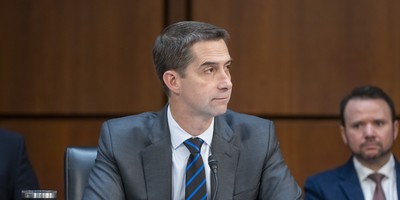Back in 2017, the Federal Communications Commission (FCC) released its Restoring Internet Freedom Order (RIFO) which provided “a framework for protecting an open internet while paving the way for better, faster, and cheaper internet access for all consumers.” Shortly after the proposals were approved, CNN famously proclaimed the decision was the “end of the internet as we know it.” John Oliver’s segment on Last Week Tonight covering RIFO led 150,000 Americans to file comments opposing the new rules.
The previous rules, which were imposed just two years before, required internet services to be treated in the same regulatory manner as a 1930s-style public utilities (referred to as Title II regulations) and required Internet Service Providers (ISPs) to “treat all internet traffic the same.” Classifying ISPs under Title II regulations also allowed the federal government to “supervise their rates and practices, force them to provide service and ban practices that it decides are unjust or unreasonable.” The new rules reclassified internet services as an information services, as opposed to common carriers, while adding numerous consumer protections.
Despite CNN’s apocalyptic claims and the substantial grassroots campaign satire comedians unleashed, three years after the proposals were released the internet is not only still functioning, but it is more accessible than ever.
Given the current coronavirus pandemic, access to fast and reliable internet has never been more important. The positive outcomes for consumers stemming from RIFO illustrates why the FCC should continue in its desire to replace “heavy-handed regulations” with “common-sense rules that will promote investment and broadband deployment.”
A recent study by the Pew Research Center highlights the significant improvement in access to broadband internet after RIFO. In April 2015, before the FCC’s RIFO, 70 percent of White Americans had access to home broadband, 52 percent of African Americans had access to home broadband, while only 50 percent of Hispanic-Americans had access to home broadband. In February 2019, after the implementation of RIFO, that number had increased to 79 percent of White Americans, 66 percent of African Americans, and 61 percent of Hispanic Americans. During the same period, the number of low-income Americans who had access increased from 53 percent to 56 percent. For Americans living in rural communities, the percentage increased from 50 percent in 2015 to 63 percent in 2018.
Recommended
As a result of the RIFO, thousands of low-income, minority, and rural Americans enjoy better broadband connectivity which allows them to browse the internet faster, access more data faster, shop online, communicate more efficiently, work remotely, and attend virtual school. The fact that broadband access has increased for low income, minority, and rural Americans also indicates that RIFO is helping close the digital divide that currently exists between wealthy urban communities and poor rural communities.
Not only is broadband more accessible, but it is also significantly faster. Since the implementation of RIFO, the FCC reported that the “average download speeds for fixed broadband in the United States have doubled, increasing by over 99%.” Between Q2 2019 and Q2 2020, the "median download speed over fixed broadband increased 19.6 percent during the last year" with upload speeds also increasing.
Increased home broadband internet has not been the only success of RIFO as Americans have recently seen a significant increase in broadband investment because of common-sense deregulation. Before RIFO, the regulations that governed the internet dated back to the 1930s, well before the existence of the internet, and disincentivized capital investment in broadband infrastructure.
Since removing these outdated regulations, capital investments in broadband has increased by $3 billion from $72 billion in 2017 to $75 billion in 2018. The $3 billion increase in broadband investment followed three years of declining investment, according to USTELECOM, an organization dedicated to enhancing broadband connectivity. As noted by the Tax Foundation, “America’s more market-driven; light-touch regulatory regimes have proved more conducive to capital investment.”
The benefits of capital investments in broadbands extend well beyond simply providing increased consumer access to reliable broadband. A 2018 study by the Strategic Networks Group showed that “economic growth and secondary investment enabled by broadband is 10 times the initial broadband investment.” This larger economic growth was driven by improved productivity, reduced costs for businesses, "improved access to online education," and workforce developments. In short, investment in broadband provided people with the ability to get better jobs, earn higher incomes, and experience a higher quality of life and improved opportunities for social mobility.
Three years on from the FCC’s RIFO, it is apparent that the apocalyptic claims have not materialized. RIFO has resulted in a considerable tangible benefit for consumers. Not only has broadband access increased for consumers, particularly for low income and rural consumers, so too has internet speed and capital investments in broadband. Recognition of the substantial benefits consumers have experienced as a result of RIFO should encourage the FCC to continue its agenda of deregulation that drives accessibility, social mobility, and investments.
Edward Longe is a research associate at the American Consumer Institute, a nonprofit educational and research organization. For more information about the Institute, visit www.TheAmericanConsumer.org or follow us on Twitter @ConsumerPal























Join the conversation as a VIP Member